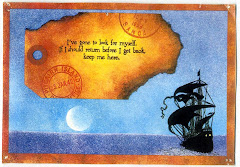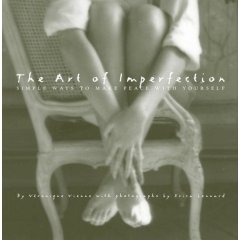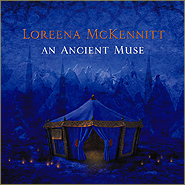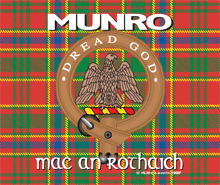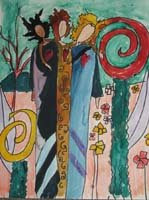Western Meadowlark
So many people come to my blog by Googling this phrase: "Oh to be in England now that spring is here." They manage to land in the right place even though they have the phrase wrong! It is "Oh to be in England now that April's there." I wrote a post a few years ago with this title, and I'm doing so again today.
First, I'll satisfy you searchers by printing this poem written by Robert Browning when he was in Italy:
HOME-THOUGHTS, FROM ABROAD
"Oh to be in England
Now that April's there,
And whoever wakes in England
Sees, some morning, unaware,
That the lowest boughs and the brushwood sheaf
Round the elm-tree bole are in tiny leaf,
While the chaffinch sings on the orchard bough
In England - now!
And after April, when May follows,
And the whitethroat builds, and all the swallows!
Hark! where my blossomed pear-tree in the hedge
Leans to the field and scatters on the clover
Blossoms and dewdrops - at the bent spray's edge -
That's the wise thrush; he sings each song twice over,
Lest you should think he never could recapture
The first fine careless rapture!
And though the fields look rough with hoary dew,
All will be gay when noontide wakes anew
The buttercups, the little children's dower
- Far brighter than this gaudy melon-flower."
Prairie Crocus/Pasqueflower
Pulsatilla (or Anemone) Patens
Well, the Internet searchers aren't really off the mark by googling "spring", because Browning does talk about May as well as April. By all accounts, April in Britain is wondrous to behold. I've often read about British bluebell woods. My Scottish second cousin Shirl has sent me pictures of her dogs walking on carpets of bluebells, which are different than the Virginia bluebells I can grow here. And my English blogging friend Leanne at Somerset Seasons Dorset Days posts pictures of her primroses, auriculas, oxlips, cowslips, yellow kerria japonica blossoms and so many more flower swe can't enjoy here.
April in England seems like quite the heady, rapturous event. I'm afraid that April in North Dakota is much more subtle. Sometimes one really has to search for signs of spring.
Bee in a plum tree
Take the prairie crocus, for example. To find them, you have to look close to the ground on virgin soil. When we were kids we would find them on the railroad right-of-way. They can also be found on other soil untouched by the plow. They are a pale lavender, the inside of the petals so pale they almost look white. The little cups are set upon feathered stems only a few inches off the ground.
Nowhere in North Dakota will you find William Wordsworth's "a crowd, a host, of golden daffodils", but we do have homeowners who plant daffodils and tulips in front of their homes. A popular color combination in Bismarck seems to be red and yellow tulips.
I've seen more honey bees so far this year than I did last spring. I hope this is a good sign that the bees have recovered from the problems plaguing them and are returning in force. Two got into my house this week. To capture them, I use a drinking glass and a stiff piece of paper. I put the glass over the bee (who's usually on a window) and slip the glass and all onto the piece of paper. This way I can safely set the bee free. Unfortunately, Gracie jumped on me yesterday just after I captured the bee, and killed it by biting it. (Does she know it has a stinger??)
Purple tulips go well with
yellow and white daffodils
yellow and white daffodils
Some robins stay in North Dakota all winter. For the rest of those who winter down south and arrive in the spring, April is the time for them to really let loose with their morning- and evensong. They seem to be singing "We're glad to be back in North Dakota!"
I once visited Denver, Colorado in April. It seemed like there was a forsythia in every yard. Forsythia are much more scarce here. Only a few grow in cool Zone Three, which covers most of North Dakota. A little finger of Zone Four sticks up into North Dakota along the Missouri River, and I think that's why we see a few forsythia bushes dotted here and there around Bismarck.
April in North Dakota is the time for those delicate, oh-so aromatic plum blossoms. And a couple of weeks ago, two rare (for Bismarck) apricot trees bloomed on the site of the old Jewish synagogue. They are so lovely there, their horizontal pale peachy-pink branches spreading to cover the entire south side of the brick building.
There were never many Jewish people in Bismarck, now there are hardly any. I wish I knew someone to who could tell me if some member of the synagogue imported those apricot trees from a warmer clime.
Soon we'll be seeing baby robins
with their funny little tufts
Even though the dandelion is considered a weed by many and a lowly plant by most, I still welcome these sunny yellow buttons every spring and always have the urge to hold a dandelion flower under someone's throat to look for "butter".
Weeping willows are my favorite trees in April. That's because they are such a lovely, pale light green at this time of the year. In a light breeze, the flexible branches undulate like curtains.
And finally, it absolutely could not be spring in North Dakota without meadowlarks and their melodious song. When I was growing up in my little village we could hear them when we walked out the door. Now I have to drive out to the country (admittedly that doesn't take long) to hear those precious cascading notes. These birds, with their brilliant yellow and black markings, prefer to sit on fence posts rather than high wires. They even build their nest on the ground.
Forsythia
Signs of spring in North Dakota may sometimes be subtle, but they certainly are welcome.






























